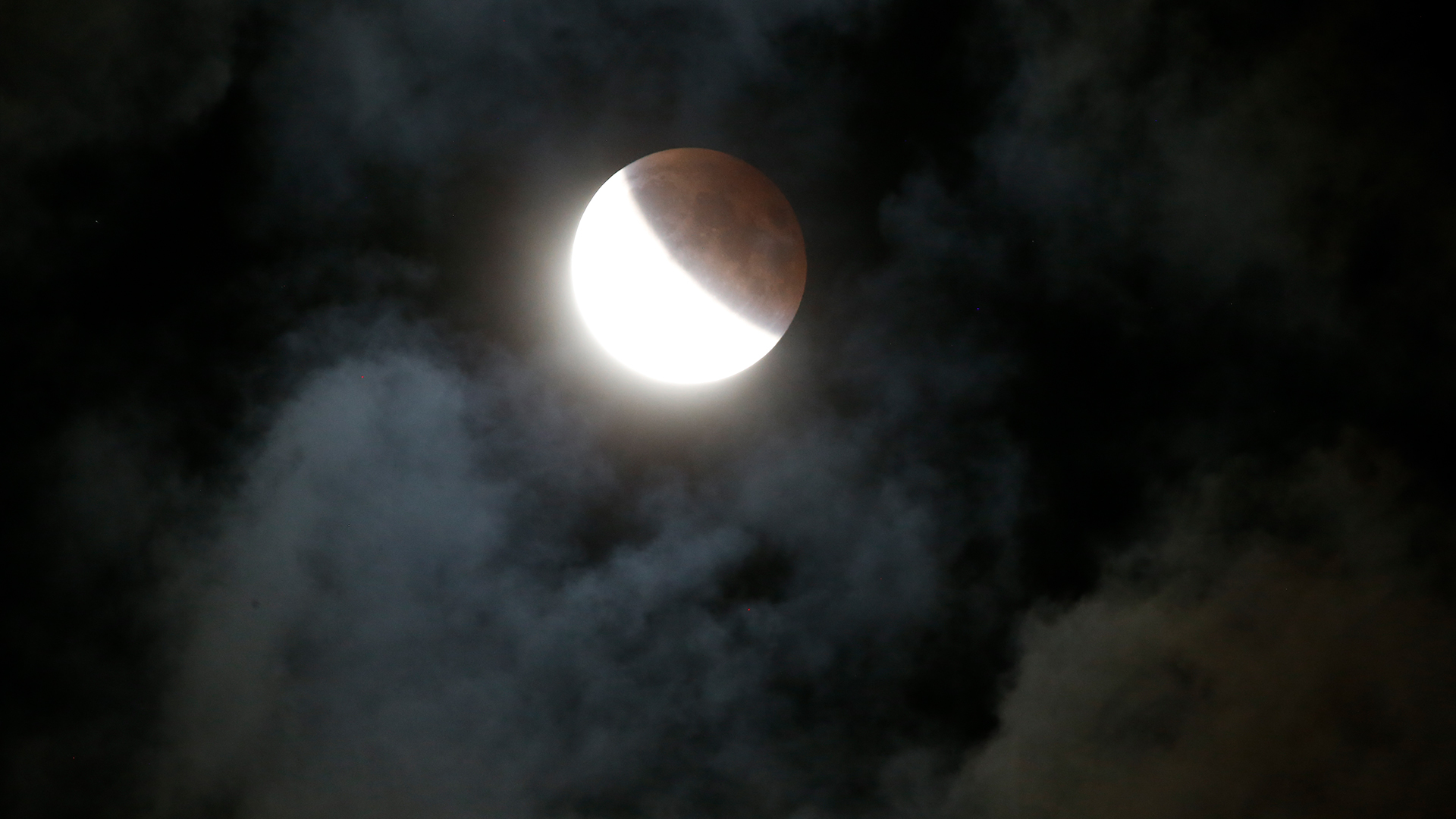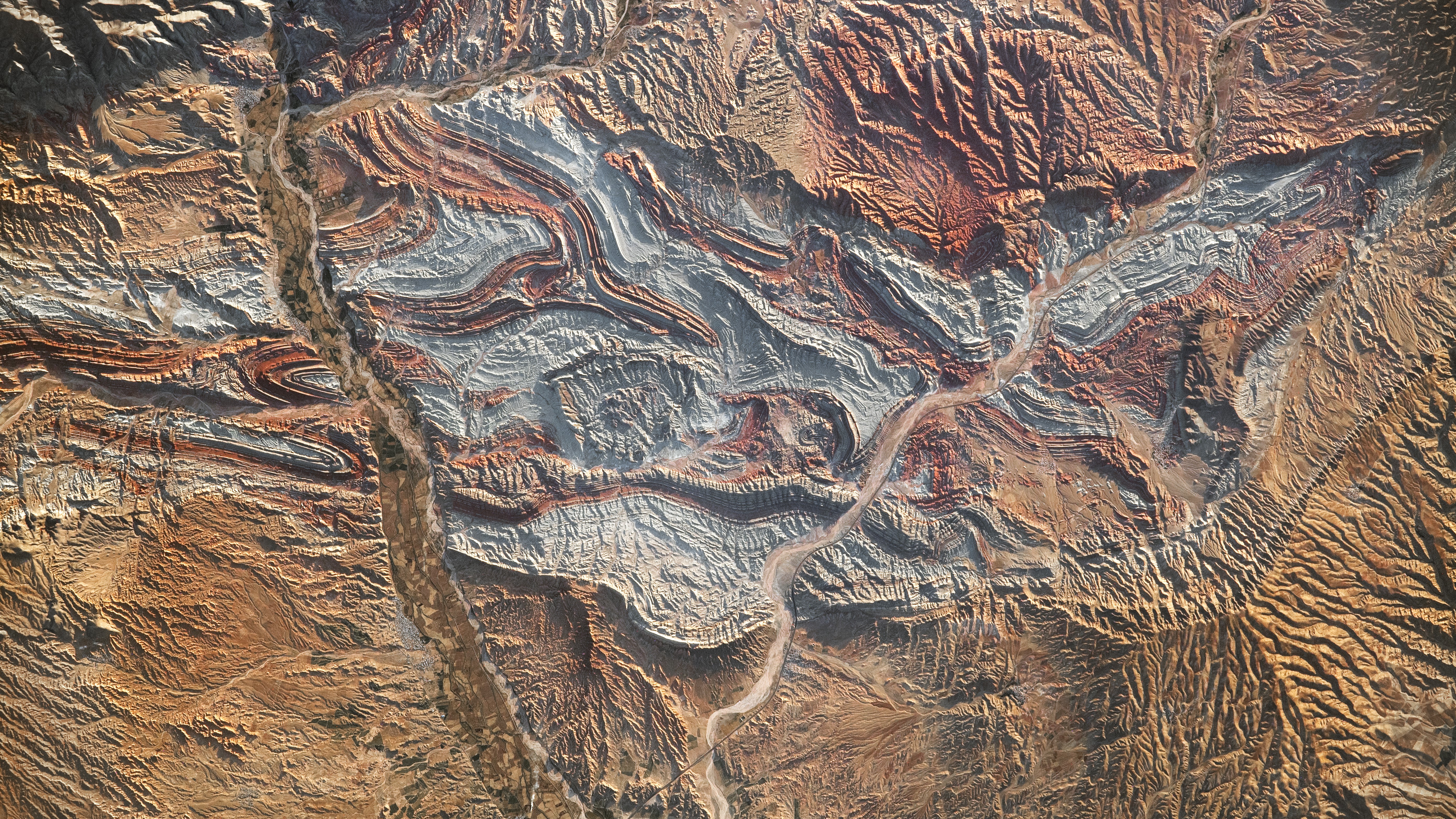How to watch the full 'Hunter's Moon' get eclipsed this weekend
October's full 'Hunter's Moon' will drift into Earth's shadow for a partial eclipse on Oct. 28.

This weekend (Oct. 28), the full Hunter's Moon will rise and, for some sky-watchers, be eclipsed by Earth. Observers in Europe, Africa and Asia will get the best view of the lunar eclipse, but there will be plenty to see from across the world, with Jupiter shining brightly alongside the moon as it rises.
The October full moon has been called the Hunter's Moon in the Northern Hemisphere since the 18th century because it is a significant time for hunting, according to Farmer's Almanac. The moon will be officially full at 3:35 p.m. EST on Saturday, Oct. 28. The best time to watch will be later that evening, at moonrise where you are, as our celestial neighbor appears on the eastern horizon.
Related: What is the moon phase today?
Observers in Europe, Africa and Asia will also be able to watch the full moon slip in and out of Earth's outer shadow, or penumbra, while it's high in the sky.
At the peak of the event, some of the moon will be inside Earth's darker inner shadow, the umbra, which normally causes a reddish "Blood Moon." However, with just 6% of the moon darkened this time, the effect will be incredibly slight. You can find out exactly what you'll see and when by using this interactive map on Timeanddate.com.
This lunar eclipse will occur just two weeks after the Oct. 14 "ring of fire" solar eclipse, which was visible across North America. It's no coincidence. The moon's orbit is tilted by 5 degrees with respect to the ecliptic — the path of the sun through our daytime sky. When a new moon intersects the ecliptic it causes a solar eclipse, with the previous or the next (and sometimes both) full moon causing a lunar eclipse.
Wherever you observe the moon from, the most interesting sight once the moon is high in the sky will likely be the presence of Jupiter, just 3 degrees below it. It will be shining particularly brightly alongside the Hunter's Moon because on Thursday, Nov. 2 it will reach its annual opposition. On that date, Earth will be between the sun and Jupiter, with the planet therefore "'full'," with 100% of the planet lit by the sun from our point of view.
Sign up for the Live Science daily newsletter now
Get the world’s most fascinating discoveries delivered straight to your inbox.
Because Jupiter is also at its closest to Earth this year, at 370 million miles (595 million kilometers) distant, according to EarthSky, the gas giant will also rise at sunset and set at sunrise, remaining visible all night. The few weeks on either side of Jupiter's opposition is the best time of the year to observe the giant planet.
The following full moon will be the Beaver Moon on Nov. 27.

Jamie Carter is a freelance journalist and regular Live Science contributor based in Cardiff, U.K. He is the author of A Stargazing Program For Beginners and lectures on astronomy and the natural world. Jamie regularly writes for Space.com, TechRadar.com, Forbes Science, BBC Wildlife magazine and Scientific American, and many others. He edits WhenIsTheNextEclipse.com.










